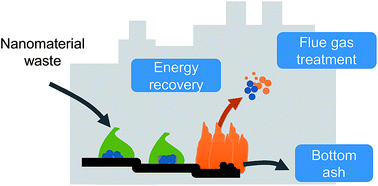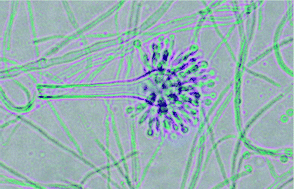 Determining the fate of compounds once they’re released into the environment is a complex issue. However such study is vital in order to assess the persistence of a compound as well as its bioavailability.
Determining the fate of compounds once they’re released into the environment is a complex issue. However such study is vital in order to assess the persistence of a compound as well as its bioavailability.
It is well-established that polyaromatic hydrocarbons (PAHs) bind to organic complexes through hydrophobic interactions and that this can occur within soils to matter such as humus and soot etc. So how does the presence of multi-walled carbon nanotubes (MWNTs) impact this? Particularly given they are organic particles with relatively high surface areas available for adsorption. Given the increasing interest in MWNTs there is now an elevated risk of ‘traditional’ organic pollution being released into an environment where MWNTs are already present, co-released with them or for MWNTs to be released onto existing polluted soil.
Li et al. used batch equilibrium experiments to assess the relationship between soil types, MWNTs and PAHs. The MWNTs used were 1-3 µm long, 11 nm diameter with relatively little bundling providing a high surface area. The group assessed three soil types: sand, sandy loam and silt loam with 2 mg g-1 of MWNTs. The compounds and concentrations of PAHs assessed were naphthalene 0.18–7.94 mg L-1, fluorine 0.16–1.62 mg L-1 and phenanthrene 0.1–0.91 mg L-1. Sorption tests (HPLC-fluorescence) were carried out after 5 days, at which point the aqueous solution was removed and replaced with fresh and left for 24hrs under the same conditions to assess desorption.
The results confirmed that the sorption of these compounds increased with increasing organic content of the soil. However, the presence of MWNTs did not appear to influence this adsorption, even at these relatively high concentrations of MWNTs. Desorption was minimal in all cases.
In addition, the group derived equations based on the ‘rule of mixtures’ capable of predicting the sorption coefficients of composite sorbents. They found good correlations between predicted and experimental data using these equations despite limitations of the model, such as assuming no void spaces.
This HOT article would be of interest to anyone carrying out batch equilibrium experiments, or is interested in the sorption of PAH and/or the fate of MWNTs. You can access it from the website for free for the next 4 weeks*!
Polyaromatic hydrocarbons (PAHs) sorption behavior unaffected by the presence of multi-walled carbon nanotubes (MWNTs) in a natural soil system.
Shibin Li, Todd A. Anderson, Micah J. Green, Jonathan D. Maul and Jaclyn E. Cañas-Carrell
DOI: 10.1039/C3EM00099K
*Free access to individuals is provided through an RSC Publishing personal account. Registration is quick, free and simple
 Nanomaterials have become a ‘hot topic’ within many spheres of science, from their manufacture and use through to their toxicity. However a critical review by Holder et al, has shed light on their disposal by incineration, an often overlooked area.
Nanomaterials have become a ‘hot topic’ within many spheres of science, from their manufacture and use through to their toxicity. However a critical review by Holder et al, has shed light on their disposal by incineration, an often overlooked area.










 Algae are identified in variety of research fields and used as indicators of water quality. Quantifying and identifying algae is often a laborious task and requires a high level of skill. Although there are several automated techniques now available, commercial developments have been limited. Several software techniques based on imaging have been previously presented, however they’re often limited to only a few algal types, so not applicable to field samples.
Algae are identified in variety of research fields and used as indicators of water quality. Quantifying and identifying algae is often a laborious task and requires a high level of skill. Although there are several automated techniques now available, commercial developments have been limited. Several software techniques based on imaging have been previously presented, however they’re often limited to only a few algal types, so not applicable to field samples.  Fungal antigens, e.g. from damp homes, have been linked to a variety of illnesses and allergies. Traditional techniques of identifying them, such as culture based-methods or microscopy, have several drawbacks including not being able to identify fungal fragments and limitations in species classification. Currently available commercial monoclonal antibody-based ELISAs are avilable, however they have not been as successful in fungal identification as they have been in other common indoor allergens.
Fungal antigens, e.g. from damp homes, have been linked to a variety of illnesses and allergies. Traditional techniques of identifying them, such as culture based-methods or microscopy, have several drawbacks including not being able to identify fungal fragments and limitations in species classification. Currently available commercial monoclonal antibody-based ELISAs are avilable, however they have not been as successful in fungal identification as they have been in other common indoor allergens. 

